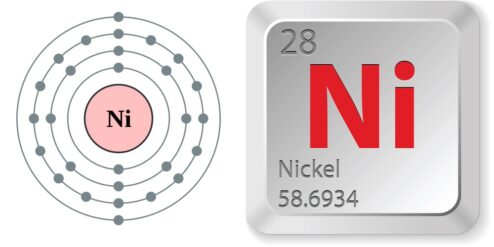Nickel is a naturally occurring, lustrous, silvery-white metallic element. It is the fifth most common element on earth and occurs extensively in the earth’s crust and core. Nickel, along with iron, is also a common element in meteorites and can even be found in small quantities in plants, animals and seawater. While this may seem like a harmless presence, nickel can, under certain circumstances, lead to health issues in individuals who are sensitive to it. In this article, we will explore the disease caused by nickel.
Understanding Nickel and Its Impact on Health
Nickel is widely used in various industries due to its resistance to heat and corrosion. However, prolonged or excessive exposure to nickel can lead to certain health issues. The human body requires a very small amount of nickel as it plays a crucial role in the production of red blood cells. However, excessive nickel can be harmful. Nickel can enter the body through inhalation, ingestion, or skin contact. Once in the body, it can accumulate and cause damage.
Nickel is a known allergen and can cause allergic reactions in sensitive individuals. These reactions can range from mild skin rashes to severe respiratory issues. It is also a potential carcinogen and long-term exposure can increase the risk of lung and nasal cancer. Furthermore, nickel can also have a negative impact on the environment, contaminating air, soil, and water.
Nickel Allergy: Causes and Symptoms
Nickel allergy is a common cause of allergic contact dermatitis — an itchy rash that appears when your skin touches a usually harmless substance. Nickel allergy is often associated with earrings and other jewelry for body piercings. But nickel can be found in many everyday items — from coins to zippers, from cellphones to eyeglass frames.
Symptoms of nickel allergy can vary from mild to severe, and can include itching, redness, rash, dry patches, and swelling of the skin. In severe cases, blisters may form and burst, causing crusts and scales. These symptoms can appear immediately after exposure or can take a few days to develop.
Nickel and Contact Dermatitis: A Deep Dive
Contact dermatitis is a skin condition that occurs when the skin comes in contact with a substance that it is sensitive to. Nickel is one of the most common causes of contact dermatitis and can trigger an immune response that leads to inflammation of the skin. This can result in redness, itching, and sometimes blistering – a condition known as allergic contact dermatitis.
Nickel-induced contact dermatitis can occur in anyone but is more common in people who have a history of skin reactions. It is also more common in women and in people who have a family history of allergies. The symptoms can last for two to four weeks and can be severe enough to interfere with daily activities.
How Nickel Triggers Systemic Nickel Allergy Syndrome
Systemic Nickel Allergy Syndrome (SNAS) is a severe systemic reaction caused by the ingestion of foods containing nickel. It is characterized by chronic inflammation of the skin and mucous membranes, and can also affect the respiratory and gastrointestinal systems.
When a person with SNAS ingests nickel, their immune system recognizes it as a foreign substance and triggers an immune response. This results in the release of histamine and other inflammatory substances, causing symptoms such as itching, redness, swelling, and pain.
Diagnosing Nickel-Induced Diseases: What to Expect
Diagnosing nickel-induced diseases involves a thorough medical history and physical examination. The doctor may ask about your occupation, hobbies, diet, and exposure to nickel. A patch test is often used to confirm a diagnosis of nickel allergy. This involves applying small amounts of nickel to the skin and observing for a reaction.
In some cases, blood tests or a biopsy may be required to rule out other conditions. If Systemic Nickel Allergy Syndrome is suspected, a low nickel diet may be recommended to see if symptoms improve.
Managing and Preventing Nickel-Related Health Issues
Managing nickel-related health issues involves avoiding exposure to nickel. This may involve making changes to your diet, lifestyle, and the products you use. Wearing nickel-free jewelry, using nickel-free utensils and appliances, and avoiding foods high in nickel can help.
Topical corticosteroids can be used to treat skin reactions, while antihistamines can help manage systemic symptoms. In severe cases, immunosuppressive drugs may be prescribed. Regular check-ups are important to monitor your condition and adjust treatment as necessary.
Nickel is a common element that can cause health issues in sensitive individuals. Understanding the causes, symptoms, and management strategies can help those affected lead a healthy life. Remember, if you suspect you have a nickel allergy or other nickel-related health issue, seek medical advice.
Per approfondire:
- Nickel Allergy – Mayo Clinic: Comprehensive overview of nickel allergy, its causes, symptoms, and treatment.
- Systemic Nickel Allergy Syndrome – PubMed: Detailed scientific article on Systemic Nickel Allergy Syndrome.
- Contact Dermatitis – American Academy of Dermatology: Information on contact dermatitis, including causes and treatment.
- Nickel in the Environment – Agency for Toxic Substances and Disease Registry: Information on how nickel affects the environment and human health.
- Nickel Carcinogenicity – World Health Organization: WHO report on the carcinogenicity of nickel.


